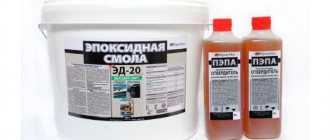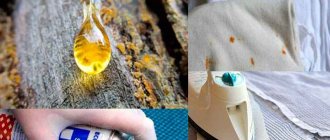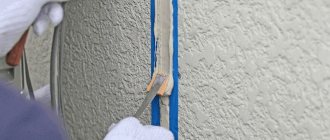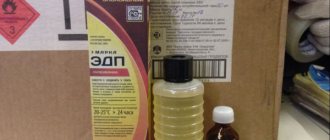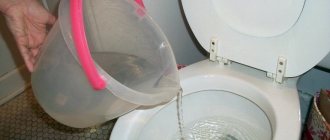Quite often, when working with construction materials, workers deal with epoxy glue. As in any work, it happens that the working material gets on the surrounding surface, as well as on the hands with which the master works. In this article we will look in detail at how and with what to wipe epoxy resin off your hands.
Removing epoxy resin from hands using Coca-Cola
In this case, Coca-Cola helps not only in boiling the kettle, but also in removing epoxy from your hands. In fact, in addition to the famous cola, Fanta, Sprite, Pepsi and other similar drinks are suitable.
How to prepare a mixture for removing epoxy from hands:
- For 1 liter of Cola, take 1 tbsp. spoon of soda
- Shake\Stir
- Wash your hands in the solution
- The duration of washing is no longer than 10 minutes
- Rinse off with plain water
- Wash your hands again with soap and apply baby cream
Basic methods for cleaning stains
The choice of method for removing epoxy stains depends on the size, age of the stain and the delicacy of the surface material.
Heating the base
A gentle method is to heat the surface with a hairdryer. To do this, the maximum temperature is set, and the heating unit is moved from side to side for uniform heating.
Important: this method is only suitable if the base is heat-resistant and high temperature will not damage it.
If the surface has a wooden base, it is recommended to moisten it with acetone before heat cleaning. This will protect the surface from cracking. After heating, carefully remove the top layer with a spatula. Then the procedure is repeated and the next layer is cleaned.
See also
TOP 5 remedies on how to properly wash a hookah at home so that there is no smell
Manipulations should be carried out until the base is completely cleaned.
Freezing Pollution
The procedure is carried out using refrigerant and protective clothing such as goggles, gloves and a respirator. The room must be well ventilated, as the aerosol contains dangerous compounds.
Before the procedure, the container is shaken and evenly sprayed onto the required areas.
If the coolant is chosen correctly, the epoxy becomes cracked, then scraped off with a spatula. Manipulations can be carried out several times in a row.
Mechanical removal
An aggressive method removes stains by scraping off the resin with the sharp end of a putty knife. It is recommended to wipe off frozen stains in this way from a metal or other surface that is resistant to this process.
This manipulation quickly cleans the base, but can scratch it. And at the site of damage there is a risk of corrosion.
Chemical solvents
One of the main properties of glue is chemical resistance. In order to remove stains, aggressive solvents are selected. These include:
- acetone;
- methylbenzene;
- solvent for varnishes and enamels;
- butyl acetate;
- nail polish remover.
Some products can spoil the base, so before use you should familiarize yourself with the composition of the chemical product.
How to remove epoxy resin from hands using baking soda
Soda is a fairly common reagent that we often use in our households and everyday life. The main advantage of soda is that even if it comes into contact with the skin for a long time, there will be no burn. The main rule when using soda is to not let your hands and surfaces dry out.
How to prepare a mixture for removing resin using soda:
- Prepare a solution in the proportion of 1 tbsp. spoon of water
- Add to this 3 teaspoons of soda
- Make a paste from the resulting mixture
- Carefully apply the paste to the contact site and the resin itself.
- Removing epoxy resin
- Wash off the mixture with warm water
Removal from the body
Epoxy resin that has come into contact with the skin of your hands or another part of the body can be cleaned off with acetone, but only if you are not allergic to this solvent.
Please note that only the area where the resin has fallen is moistened with acetone.
In other cases, you need to thoroughly wipe the resin before it thickens with a dry cloth, and then wash the area with soap. If an undetected drop of resin managed to harden on the skin, nothing fatal happened. The human epidermis is very elastic; after some time, under the influence of sweat, the microbonds between the epoxy polymer chains and the skin will weaken and the dirt will peel off. A possible chemical burn from the action of certain types of resins is treated with traditional anti-burn therapy while taking sedatives for allergies.
Useful to know > Basic principles of working with polyester resin, its features
Removing Epoxy from Hands Using Rubber Glue
It may be surprising for some that the glue should be removed with glue, but there is another side to the issue. The essence is not a wedge with a wedge, but in some ways there is a similar meaning. The fact is that rubber glue contains solvents, but the main thing here is not to overexpose it.
The entire removal operation should not take 10 seconds, otherwise you will also have to remove rubber glue from your hands later.
IMPORTANT! Remember that these chemicals should not be used on children, as there is a risk of allergic reactions and burns.
What to do with rubber glue
- Apply glue to the skin area
- Keep the glue on contact for no longer than 10 seconds
- Gently roll the glue and resin from the contaminated area with your fingers.
- Wash your hands with soap and apply baby cream
How to wash a child's hands
Children's skin is delicate and sensitive. It must be washed carefully, without using acid-containing preparations, fast-acting solvents (acetone, turpentine, gasoline), or washing powders.
You can remove tar from a child’s hands with vegetable oil, baby cream, or baking soda. Rub in with light movements without pressure, using a soft brush or foam sponge.
Turpentine, starch and ammonia come to the aid of removal
We buy regular gum turpentine. This product is completely safe for the skin and does not cause any reaction that will harm it.
Prepare a mixture for removing turpentine + starch + ammonia
- Add 3 drops of ammonia to the prepared container.
- Add 1 tbsp. a spoonful of starch
- Add 4 drops of turpentine to the mixture
- Mix everything thoroughly
- Apply to the contaminated area
- Removing epoxy stain using a hand brush
- Wash everything thoroughly with laundry soap and apply baby cream.
Cleaning tiles and glass
There are different ways to remove resin from tile and glass surfaces. If the stains are fresh, they are removed by wiping with a damp sponge and soapy water. The hardened substance is removed by heating and cooling.
Heating
Contaminated areas are heated with a hair dryer until the resin softens. Then it is carefully cleaned with a convenient tool and wiped with a dry cloth.
Cooling
The resin is effectively cleaned by freezing it with a refrigerant. You should spray the spray on contaminated areas. The cracked substance is then removed with a sharp instrument.
See also
12 methods to quickly remove wax from clothes at home
How to Remove Epoxy Resin from Hands Using Acetone
Everything here is simple to the point of banality. Acetone is found in almost every home, and every woman is familiar with its smell when she washes off nail polish.
How to remove epoxy resin with acetone
- Apply acetone to a cotton pad
- Apply the cotton pad to the epoxy stain for 3-5 seconds
- After that, try to clean the stain
- After cleansing, wash your hands with soap and apply baby cream
Well, that’s all, we hope these methods will be useful and simple for you, since these materials and reagents are available in almost every home and you will certainly find a suitable method for yourself.
How to clean pine resin
First of all, you need to soften the resin substance and restore its ductility. And then proceed to removal using improvised means.
Washing hands with soap
It helps if the contamination was noticed in time and did not have time to harden. It is first wiped with a towel, handkerchief or dry cloth. After the procedure, sticky marks remain on the skin. It's easy to get rid of them. It is enough to wash your hands with warm water and soap.
For adults it is better to use a household item, for a child it is better to use the one he uses to wash himself every day.
Household chemicals
Anti-carbon, soot and tar cleaners for cleaning grills, ovens, gas/electric stoves with solvent additives are suitable for removing tar. They contain aggressive components. They must be used carefully, following the manufacturer's instructions. For use in adults only.
The following drugs are effective and safe for the skin:
| Product name | How to use |
| Delicate cleaner 07 Clean Excess | Apply with sprayer set to Stream position. After 3-4 seconds, remove with running water. |
| Mukunghwa O'clean based on soap tree berries and baking soda | Spray the spray by turning the nozzle to the Stream position. Leave on skin for 1-2 minutes. Rinse off under running water. |
| Synergetic Antibacterial with natural plant ingredients | Moisten a cotton pad with a small amount of gel from the bottle. Place it on the resin drop-stain. Wait a little. Put away. Wash your hands. |
| Fairy Ultra Concentrate | Apply 1 drop to a sponge. Rub the tar stain for 3-4 minutes. Remove with plenty of water. |
Household chemicals cause irritation. Not suitable for people with hypersensitive, dry skin and small children. When using it, you must observe the following rules:
- Apply for 5-10 seconds to the resin stain, being careful not to get into the area around it.
- After treatment, quickly rinse with warm soapy water or running tap water.
- Lubricate your hands with nourishing cream.
Washing powder
Any will do, but washing powder for white laundry is more effective. It contains special whitening additives.
Sequencing:
- Apply dry to sticky stain.
- Rub vigorously with a hard sponge or washcloth.
- Remove the pellets formed during rubbing.
- Rinse.
Sunflower oil
Suitable for everyone. Safe, environmentally friendly way.
Execution order:
- Soak a cotton pad or sponge with oil.
- Rub the resin coating with it for at least half an hour.
- Rinse off.
You can wipe it off with any vegetable oil.
Lemon acid
Mild acid-containing product. Dry powder is used.
- A sponge is dipped into it.
- The stained area is rubbed.
- Rinse with water.
Baby cream
Suitable for children and adults.
- A small portion is applied to and around the contaminated area.
- Scrubs off.
Alternate these operations several times until complete cleansing.
Adults can scrub with a stiff brush. For children, use brushes with soft bristles or medium severity. Remove with a dry cloth. Wash off with soap solution. Baby cream cleanses and at the same time softens the surface without causing irritation.
Turpentine
Non-toxic gum turpentine is used for cleaning.
- Moisten the sponge with a few drops of turpentine.
- Rub the stain vigorously.
- Rinse thoroughly.
After cleansing with any chosen product, the skin of your hands should be lubricated with a nourishing cream.
Traditional methods
They come to the rescue when resin sticks to your hands.
| Folk remedy | How to use |
| Peanut butter | Dampen a piece of cloth. Rub it on the dirty stain. Remove by rinsing. |
| Mayonnaise | Lubricate the area where the resin gets in. Wait 30 minutes. Remove with a napkin or piece of cloth. |
| Cologne | Apply a piece of gauze or cloth soaked in cologne to the area of contamination several times until the resin substance is completely dissolved. |
| Cleansing paste-scrub made from honey and oatmeal | Rub the applied scrub until the resin and its residues are completely removed. |
| Petrolatum | Apply a small layer. Leave for 5 minutes. Wipe off with a cotton pad. |
Prohibited methods
There are many products that help remove tar, but at the same time worsen the condition of the skin. It is not recommended to use them.
Hot way
This method helps to clean clothes or shoes. However, testing it on skin is not recommended. The essence of the hot method is to iron the contaminated area through parchment. Under the influence of elevated temperature, the substance acquires a soft consistency. Thanks to this, it can be removed with a sponge.
Expert opinion
Zakharova Irina Yurievna
Cleaning professional with 15 years of experience. Our best expert.
Ask a Question
At the same time, using the hot method on the skin is strictly prohibited - it can cause serious burns.
Cold cleaning
This method is also suitable for different items. In this case, it is recommended to freeze the product stained with resin. Under the influence of low temperature, the resin acquires a crystalline texture, and it can be broken with a hammer. However, rubbing the skin with a piece of ice is not recommended, as there is a risk of frostbite.
Solvents for epoxy glue
To reduce the density of epoxy stains, it is permissible to use various solvents. These include denatured alcohol and varnish thinner. When choosing a specific product, you need to consider its purpose. However, the use of such substances for treating leather is strictly prohibited.
Acid
The use of tetrafluoroboric or sulfuric acid on the skin is strictly prohibited. If such substances come into contact with the surface of the body, a person instantly receives a chemical burn. This entails the rapid development of coagulation necrosis - tissue death. In this case, the skin becomes covered with a white crust with obvious boundaries. The higher the acid content, the deeper the wound.
See also
Which gloves are best to choose for washing dishes and what to consider?
Non-standard methods for cleaning clothes
You can remove a thin layer of resin from clothing using solvents.
There is no need to try to immediately wipe off fresh resin from clothes - this will spread it over the surface and go even deeper into the threads. You should not wash the item in the machine or rub the stain with laundry soap - this will only worsen the situation. The main difficulty in removing resin stains from fabric is that the resin, which enters the material in liquid form, impregnates it and hardens into the fibers. Removal must be carried out in stages: first, surface contamination is removed, then the internal structure of the threads is cleaned.
Before removing the resin stain, the fabric should be placed in the refrigerator freezer for two hours. The frozen substance is then carefully scraped off the surface of the clothing. Stains on large items that do not fit in the freezer are covered with ice cubes for freezing. However, traces of resin on things made of thin fabric cannot be removed using this method - they can be damaged by scraping.
The second stage consists of using solvents, since it will not be possible to remove stains from the resin of pine and other coniferous trees from fabric without their help. You can clean the material with gasoline, white spirit or turpentine, in which you need to moisten a foam sponge. Pure alcohol or vodka also cleans resin well.
The resin poses the greatest danger to woven materials. These are a variety of jeans, trousers, shirts and so on. If resin gets on such a surface, you must proceed according to the following algorithm:
- The corresponding item of clothing must be placed in the freezer. Low temperature will prevent the diffusion process. That is, resin particles will not be able to penetrate deeply into the fabric. Accordingly, curing will occur on the surface of the garment without affecting the structure of the material. Keep clothes in the freezer for no more than 10 minutes. Prolonged exposure to low temperatures will not improve the result. Therefore, 10 minutes will be enough;
- Then, you need to use a thin metal knife to remove the resin from the surface of the stained object. It is necessary to “pick off” the resin without damaging the fabric itself. To do this, it is advisable to stretch the fabric so that the entire surface of the stain is accessible;
- Typically, there will be a stain where the resin was. It will not be very noticeable if you freeze the clothes in a timely manner. If the resin has managed to penetrate inside the fabric, then the contamination will be more pronounced. To get rid of this stain, you should use alcohol. You need to soak a cotton swab or napkin generously with alcohol. After which, you need to treat the remaining stain.
This method has been carried out repeatedly and is the most effective. In this way I cleaned a stain of epoxy resin with a diameter of 5 cm. I must say that after freezing and alcohol treatment there was absolutely no trace left of the stain.
Frozen clumps of resin on good clothes are an unpleasant phenomenon, but also completely removable.
Advice! Large pieces of dirt must first be mechanically scraped off with a knife or a thin file. This method is applicable only for rough work clothes: overalls, denim trousers, aprons.
Finer fabrics should be cleaned delicately and carefully. You can remove stains at home using well-known products. For best results, glue stains must be frozen. We place the clothes in the freezer for two to three hours, the cleansing process will go faster and more efficiently.
- Alcohols. Wine, ammonia, and denatured alcohol are excellent means for resuscitating your favorite clothes. We moisten a piece of clean rag or a cotton-gauze swab in alcohol and begin to clean the dirty stains. As a rule, with some effort, it is quite possible to achieve complete victory over the dirt.
- Turpentine. Natural pine extract has a good cleansing effect. For fabrics, it is better to choose pharmaceutical gum turpentine rather than technical turpentine. Apply generously to the stain and leave it on the clothing material for a while. Take a soft brush and scrub the stain. Turpentine has a sharp, characteristic odor, which can be eliminated by subsequent washing in the machine with aromatic powder and conditioner. For stubborn stains, use a solution of turpentine and alcohol mixed in equal parts.
- Melting. Epoxy can both harden and liquefy. For this purpose, a heating method is used. For fabric, ironing stains with a hot iron works well. Lay the material out on an ironing board and place a piece of clean plain fabric or a paper towel on both sides under the stains. With intensive ironing, the glue will gradually melt and be absorbed into the substrate. After the procedure, light stains should also be rubbed with alcohol to consolidate the effect. The final stage of cleaning will be automatic washing of clothes on a standard cycle.
- Store-bought stain removers. Some types of stain removers are very successful at removing even stubborn stains such as epoxy glue. Stains from white clothing should be washed with oxygen-containing bleaches. Soak a white item in warm water, add bleach and leave for 1-2 hours to act. Yellowish stains on the fabric after soaking will disappear when washed in an automatic machine.
- Solvents. Silk and synthetic fabrics lend themselves well to cleaning with a range of solvents. Printed fabrics can be cleaned with nail polish remover; it is less aggressive to fibers and patterns. For difficult to remove stains from plain clothes, white spirit or acetone are more suitable.
We suggest you read How to remove glue from adhesive fabric
As practice shows, non-trivial ways to save wardrobe items dear to your heart also work.
For example, the well-known brands of carbonated drinks “Coca-Cola” and “Pepsi-Cola” have proven themselves well as a powerful household cleaner.
Of course, there is no need to add lemonade to the washing machine, but it is quite possible to mechanically remove stains from colored fabrics. After the obvious cleaning effect, it is better to wash the item thoroughly.
Dimexide is a cheap pharmaceutical product for treating postoperative sutures and compresses. Dimexide should be diluted in warm water in approximately a ratio of 1:3, wet the fabric generously with the solution, leave for a while, and then wash in the usual way.
Cleaning bathroom tiles from epoxy adhesive
Often, after installation and finishing work in the bathroom, sloppy smudges of epoxy remain on the tiles, since the grout is made on its basis. Or epoxy glue was used to attach the cladding panels.
If the surface is light enough, such unsightly smudges and stains will spoil the whole picture of a fresh renovation. You can remove stains from tiles using a variety of methods.
- Heating method. We remember that epoxy resin-based glue can soften. Therefore, we arm ourselves with household appliances: a hairdryer or a steam cleaner. We direct a stream of hot air onto the dirt and wait for it to melt. After some time, we clean off the softened dirt with a spatula and wash it with conventional products.
- Freezing method. A more complex but effective way to clean tiles. We will need a special refrigerant in an aerosol package. Having previously protected the skin and eyes with protective clothing and goggles, spray the liquid from the can onto the stain. After a few minutes, the fragile resin particles can be easily scraped off with a regular scraper or spatula.
- Chemical reaction method. You can quickly remove resin from ceramics, marble, and earthenware using chemical reagents. It can be boric, hydrochloric, nitric acid. Having treated the surface with the reagent very carefully, after a while we wash off the dirt with a concentrated washing solution.
As the experience of home-conscious and thrifty housewives shows, even such incredible pollution can be quickly eliminated without any special financial costs or titanic efforts. Take note of these simple recommendations, and your everyday problems will be solved quickly and effectively.
How to wash it out of your hair
To remove resin from hair, you can use vegetable oil. In this case, it is necessary to use a comb with frequent teeth. However, you need to act carefully so as not to damage your hair.
You can also treat the stained area with a piece of ice. This will help freeze the substance, making it easier to remove. Another option is to apply peanut butter or mayonnaise to your hair. Treated hair should be wrapped in film for half an hour and rinsed with water.
What is it like?
Most often you have to scrub epoxy resin off your hands. It is a strong adhesive that holds different types of materials together. With the help of this substance it is possible to fix wood or plastic. When carrying out work, epoxy resin is used in the form of a liquid. But after a certain time it freezes.
In case of contact with skin, it is recommended to immediately carry out cleansing procedures. With prolonged contact there is a risk of irritation and swelling of the dermis. The substance can also provoke allergic reactions, hyperemia, lacrimation, and damage to the respiratory system.
It is important to consider that epoxy resin is a carcinogenic substance that leads to intoxication of the body.
